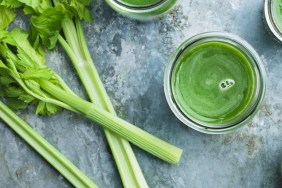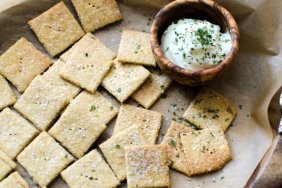We’ve all heard the protein spiel at the gym: Powders are regularly touted as a post-workout smoothie essential as they not only help make you feel full, they help rebuild the muscle tears that happen as a natural part of working out. We also know that getting protein from whole foods is an essential part of a balanced diet. Not only is protein one of the most important building blocks of bones, but high-protein breakfasts have been shown to help with weight loss.
What we’ve heard less about is that getting too much is a real danger, especially when innumerable foods are fortified with protein as a weight loss aid. Then there’s all the supermarket shelf clutter — soy, whey, casein — what the heck is the difference? We turned to Elizabeth Somer, registered dietitian and author of Eat Your Way to Sexy, and nutrition consultant Jessica Fishman Levinson, MS, RDN, CDN and founder of Nutritioulicious, to find out the ABCs of protein.
How Much Protein Do We Actually Need?
“According to the Recommended Dietary Allowances, the average woman from 19 years onward needs between 46 and 50 grams of protein a day. The average man needs 58 to 63 grams a day. Or, about 0.8 grams/kilogram body weight. If a person is in the active stage of serious bodybuilding, then he/she needs closer to 1.5 to 2 grams/kilogram body weight. Just going to the gym or biking or doing any other activity does not warrant extra protein. According to every national nutrition survey going back to the 60s, protein is the one nutrient we get enough of, and often way more than we need, while everything from vitamin A to zinc is low in the diet,” explains Somer.
Why Is Protein Important?
According to Levinson, the primary benefits of a protein-rich diet are that protein is more satiating and takes longer to break down in the body, thereby keeping you full longer and reducing the risk of overeating. Secondly, it’s necessary for muscle protein synthesis. Some other benefits of a protein-rich diet:
- As part of a reduced-calorie diet, eating more protein can support weight loss and maintenance by boosting metabolism, curbing appetite and helping the body retain muscle, while losing fat.
- Eating more high-quality protein, combined with regular physical activity (a combination of strength training and cardio) can help slow or prevent age-related muscle loss.
- People who eat protein from high-quality, nutrient-dense foods every day are more likely to have an improved overall diet and get the necessary nutrients for optimal health.
What Happens If You Eat Too Much?
“Any excess protein that isn’t used for building or maintaining muscle mass will be broken down to use for energy or it will be stored as fat,” explains Levinson. Aside from weight gain, it has also been associated with kidney problems and dehydration.

Image: Getty
What’s the Difference Between Whey, Soy, Casein and Other Sources of Protein?
“Some proteins are animal-based and some are plant-based,” says Levinson, adding that she generally doesn’t recommend protein powders because most people take in enough protein in the form of whole foods. If you’re going to opt for a powder, however, you’ll want to consider your goals when shopping the health aisles as there are major differences in calories. Further, some (e.g., casein and whey) are better for muscle recovery than others. It’s also important that the one you opt for has all of the 8 to 10 essential and semi-essential amino acids.
What Are the Best Food Sources of Protein?
Animal proteins, including meat, eggs, fish/seafood have all the essential amino acids the body needs, says Levinson. “Some dairy, like cottage cheese and Greek yogurt, also have a good amount of protein, but it’s important to be mindful of saturated fat content in dairy. Some of the best vegetarian protein sources include beans, whole grains like quinoa and oatmeal, nuts and nut butters and soy.” When buying packaged foods, Somer cautions that it’s important that you can recognize all the ingredients on the label and that there aren’t a long list of them. “The food should also have fiber, very little sugar and be made from real ingredients, not things you can’t pronounce.”







